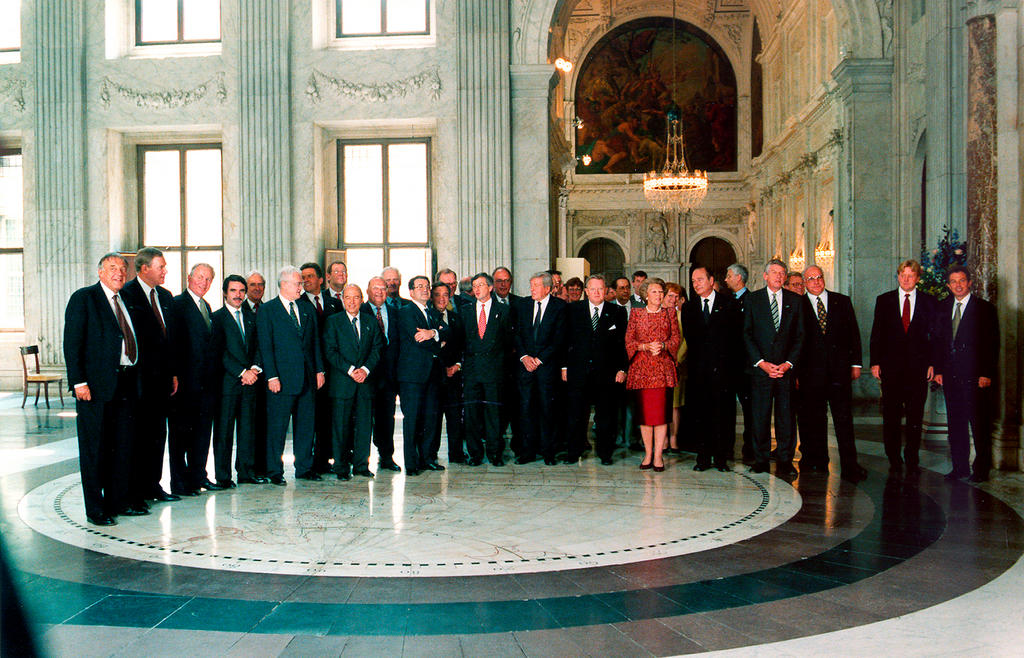The History of the Amsterdam Treaty: Shaping the European Union
 |
| The Amsterdam Treaty (cvce.eu) |
The Amsterdam Treaty, signed on October 2, 1997, in the Dutch capital, marked a pivotal moment in the evolution of the European Union (EU). This treaty aimed to address the challenges arising from EU enlargement, enhance institutional efficiency, and deepen cooperation among member states. The treaty's provisions and impacts have had far-reaching effects on the EU's structure, policies, and role on the global stage.
Context and Motivations
In the wake of the Maastricht Treaty of 1992, which laid the foundation for the EU's economic and monetary union, the European Union found itself facing new challenges. The prospect of Eastern European countries seeking EU membership and the desire to streamline decision-making processes prompted the need for further reforms. The Amsterdam Treaty emerged as a response to these challenges, seeking to adapt the EU to a changing geopolitical landscape.
Key Provisions and Objectives
1. Institutional Reforms: The Amsterdam Treaty introduced several changes to EU institutions to improve decision-making efficiency. It expanded the use of qualified majority voting (QMV) in the Council of Ministers, reducing the likelihood of single-country vetoes. It also enhanced the role of the European Parliament, increasing its legislative powers and allowing it to co-decide on a wider range of policy areas.
2. Enlargement Readiness: With the Eastern European countries' desire to join the EU, the treaty introduced provisions to prepare the Union for enlargement. It adjusted various policy areas to accommodate the needs of potential new members while ensuring that the EU's institutions could function effectively with an expanded membership.
3. Social Policy: The Amsterdam Treaty sought to reinforce the EU's commitment to social policy. It aimed to establish a high level of employment, improve working conditions, and combat social exclusion. These goals underscored the EU's commitment to addressing not only economic but also social aspects of integration.
4. Justice and Home Affairs: The treaty aimed to enhance cooperation in justice and home affairs, especially in areas of immigration, asylum, and law enforcement. This laid the groundwork for greater collaboration among member states to address cross-border challenges, including organized crime and terrorism.
5. Foreign and Security Policy: While the treaty did not bring about a revolutionary change in this area, it did include provisions for closer cooperation on security and defense matters. It established the European Security and Defense Policy (ESDP), paving the way for the EU's increased involvement in global security affairs.
Impacts and Legacy
The Amsterdam Treaty had a significant impact on the trajectory of the European Union:
1. Enlargement: The treaty's reforms made it possible for the EU to accommodate the 2004 enlargement, which saw the accession of ten new member states, mostly from Eastern Europe. The treaty's provisions ensured that decision-making remained feasible in an EU with a larger and more diverse membership.
2. Institutional Improvements: The enhanced role of the European Parliament and the expanded use of qualified majority voting in the Council of Ministers streamlined decision-making processes, making the EU more effective in addressing various issues.
3. Social Dimension: The treaty's emphasis on social policy signaled the EU's recognition of the need to balance economic integration with social concerns. It underscored the EU's commitment to improving the lives of its citizens beyond purely economic matters.
4. Foreign Policy Developments: The Amsterdam Treaty's provisions on foreign and security policy laid the groundwork for the Common Foreign and Security Policy (CFSP) and the establishment of the European Security and Defense Policy. These developments marked steps toward a more unified European approach to global affairs.
5. Debate and Reflection: The Amsterdam Treaty prompted debates about the direction of European integration. Some viewed the treaty as a missed opportunity for more comprehensive reforms, while others saw it as a pragmatic response to the EU's changing circumstances.
In conclusion, the Amsterdam Treaty of 1997 played a crucial role in shaping the European Union during a period of significant change. Its provisions addressed the challenges posed by enlargement, while also striving to enhance the EU's effectiveness, social dimension, and foreign policy coordination. While not a revolutionary treaty, its impacts on decision-making processes, policy areas, and the EU's global role were substantial. As the EU continues to evolve, the Amsterdam Treaty remains a milestone in the Union's journey toward deeper integration and cooperation.
Comments
Post a Comment